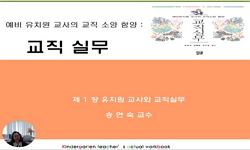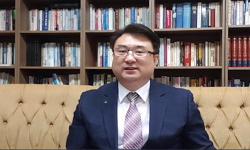세계 경제의 발전은 세계 고등교육 시장의 국제화를 촉진하였고, 최근 학령인구의 감소, 고등 교육 시장의 초과 공급으로 국내 대학뿐만 아니라 세계의 대학들이 세계의 학생들을 대 상으로...
http://chineseinput.net/에서 pinyin(병음)방식으로 중국어를 변환할 수 있습니다.
변환된 중국어를 복사하여 사용하시면 됩니다.
- 中文 을 입력하시려면 zhongwen을 입력하시고 space를누르시면됩니다.
- 北京 을 입력하시려면 beijing을 입력하시고 space를 누르시면 됩니다.
부가정보
국문 초록 (Abstract)
최근 세계 유학 시장의 두드러진 특징 중 하나는 유학생들의 이동에서 권역 내 이동이 더 욱 증가하고 있다는 것이며, 이런 의미에서 현재 중국은 한국의 최대의 유학생 송출국이기도 하면서 같은 권역 내 아시아 유학생 유치의 경쟁국이기도 하다. 이에 본 연구에서는 한국의 외국인 유학생 유치 확대를 위해 한 중 양국의 외국인 유학생 교육 발전 및 주요 제도 중 장 학금제도, 의료보험제도 및 시간제 취업 취업제도를 중심으로 한 중 양국의 외국인 유학생 유치 정책과 제도에 대한 비교 연구를 진행하고 이를 바탕으로 한국의 외국인 유학생 유치 확대를 위한 제언을 하고자 한다.
세계 경제의 발전은 세계 고등교육 시장의 국제화를 촉진하였고, 최근 학령인구의 감소, 고등 교육 시장의 초과 공급으로 국내 대학뿐만 아니라 세계의 대학들이 세계의 학생들을 대 상으로 유학생을 유치하기 위해 전력을 다하고 있다. 이러한 고등교육 시장의 국제화 배경 아래 2014년 在韓 외국인 유학생 수는 84,891명에 이르렀다. 그 중 중국 유학생이 한국 전체 외국인 유학생의 60% 정도를 차지하고, 한국 유학생 역시 최근 중국의 외국인 유학생 중 가 장 많은 비중을 차지하고 있어 한 중 양국은 교육서비스 무역에서 상당히 중요한 교역국이 다.
최근 세계 유학 시장의 두드러진 특징 중 하나는 유학생들의 이동에서 권역 내 이동이 더 욱 증가하고 있다는 것이며, 이런 의미에서 현재 중국은 한국의 최대의 유학생 송출국이기도 하면서 같은 권역 내 아시아 유학생 유치의 경쟁국이기도 하다. 이에 본 연구에서는 한국의 외국인 유학생 유치 확대를 위해 한 중 양국의 외국인 유학생 교육 발전 및 주요 제도 중 장 학금제도, 의료보험제도 및 시간제 취업 취업제도를 중심으로 한 중 양국의 외국인 유학생 유치 정책과 제도에 대한 비교 연구를 진행하고 이를 바탕으로 한국의 외국인 유학생 유치 확대를 위한 제언을 하고자 한다.
다국어 초록 (Multilingual Abstract)
A marked feature of the recent global educational market is the accelerating increase in the movement of students within the bloc. Currently, China is not only the greatest sender of students to Korea but also a rival in attracting students from other Asian countries. The purpose of this study is to explore the new directions for policy making to expand the number of international students in Korea by comparing both the paths of development up to the present taken by Korea and China for education of international students and the major educational systems of the two countries. More specifically, to boost the bid to attract more students from overseas countries, this paper carried out a comparative analysis of education for international students in the two countries, focusing on some of the key policies and systems on education of foreign students. Particular attention was paid to scholarship programs, health insurance schemes, part-time employment and general employment policies. Based upon the results of the comparative analysis, this study proposed a strategy to induce more international students into Korea.
Development of the world economy has promoted an internationalization of the global higher education market. Due to the recent decrease in the school-age population and oversupply in the higher education market, universities in Korea and worldwide are...
Development of the world economy has promoted an internationalization of the global higher education market. Due to the recent decrease in the school-age population and oversupply in the higher education market, universities in Korea and worldwide are making arduous efforts to attract students from all over the world. Along with the internationalization, the number of international students in Korea already reached 84,891 in 2014. Amongst them, Chinese students account for 60% of the overall international student population in Korea. Likewise, Korean students also represent the largest share of the total international student population recently enrolled in the educational institutions in China. Korea and China are essential partners for each other in their education service trade.
A marked feature of the recent global educational market is the accelerating increase in the movement of students within the bloc. Currently, China is not only the greatest sender of students to Korea but also a rival in attracting students from other Asian countries. The purpose of this study is to explore the new directions for policy making to expand the number of international students in Korea by comparing both the paths of development up to the present taken by Korea and China for education of international students and the major educational systems of the two countries. More specifically, to boost the bid to attract more students from overseas countries, this paper carried out a comparative analysis of education for international students in the two countries, focusing on some of the key policies and systems on education of foreign students. Particular attention was paid to scholarship programs, health insurance schemes, part-time employment and general employment policies. Based upon the results of the comparative analysis, this study proposed a strategy to induce more international students into Korea.
목차 (Table of Contents)
- 1. 머리말
- 2. 한·중 양국 외국인 유학생 유치 정책의 발전 과정
- 1) 한국 외국인 유학생 유치 정책의 발전 과정
- 2) 중국 외국인 유학생 유치 정책의 발전 과정
- 3. 한․중 양국 유학생 교육의 주요 제도 비교
- 1. 머리말
- 2. 한·중 양국 외국인 유학생 유치 정책의 발전 과정
- 1) 한국 외국인 유학생 유치 정책의 발전 과정
- 2) 중국 외국인 유학생 유치 정책의 발전 과정
- 3. 한․중 양국 유학생 교육의 주요 제도 비교
- 1) 장학금제도
- 2) 의료보험 제도
- 3) 시간제 취업 및 취업 관련 제도
- 4) 교육의 질 관리 제도
- 4. 한국 외국인 유학생 유치 정책 발전을 위한 제언
- 1) 한국 정부의 새로운 유학생 유치 목적 및 목표 정립 필요
- 2) 외국인 유학생 유치를 위한 법적 제도적 근거 확립
- 3) 외국인 유학생을 위한 관리 시스템에 관한 시각과 의식 전환
- 4) 외국인 유학생 유치를 위한 다양한 정책 및 홍보 채널 마련
- 5. 결론
- 【참고문헌】
- 【논문초록】
참고문헌 (Reference)
1 박영진, "한중 FTA 교육서비스 분야의 대응방안 연구" 한중사회과학학회 11 (11): 223-249, 2013
2 부산일보, "한국의 해외 유학생 수 세계 3위"
3 배소현, "한국 고등교육 국제화 정책 분석" 교육문제연구소 37 : 2014
4 남수경, "한‧중‧일 3국의 정부지원 유학생정책 비교 분석" 한국비교교육학회 22 (22): 75-98, 2012
5 구자억, "중국의 외국 유학생 유치정책 및 사례연구: 대학을 중심으로" 한국교육개발원 2014
6 교육부, "유학생 유치 확대 방안(안)" 2015
7 민윤지, "우리나라 교육서비스시장개방의 기대효과와 교육단계별 대응전략에 관한 연구" 대한경영교육학회 21 : 2011
8 교육과학기술부, "외국인 유학생 유치 다변화 전략 방안" 교육과학기술부 2010
9 교육부, "외국인 유학생 및 어학연수생 표준업무처리요령"
10 유현숙, "교육시장 개방에 관한 고등교육기관 실무자 및 연구원들의 인식에 관한 연구" 교육연구소 7 (7): 111-132, 2006
1 박영진, "한중 FTA 교육서비스 분야의 대응방안 연구" 한중사회과학학회 11 (11): 223-249, 2013
2 부산일보, "한국의 해외 유학생 수 세계 3위"
3 배소현, "한국 고등교육 국제화 정책 분석" 교육문제연구소 37 : 2014
4 남수경, "한‧중‧일 3국의 정부지원 유학생정책 비교 분석" 한국비교교육학회 22 (22): 75-98, 2012
5 구자억, "중국의 외국 유학생 유치정책 및 사례연구: 대학을 중심으로" 한국교육개발원 2014
6 교육부, "유학생 유치 확대 방안(안)" 2015
7 민윤지, "우리나라 교육서비스시장개방의 기대효과와 교육단계별 대응전략에 관한 연구" 대한경영교육학회 21 : 2011
8 교육과학기술부, "외국인 유학생 유치 다변화 전략 방안" 교육과학기술부 2010
9 교육부, "외국인 유학생 및 어학연수생 표준업무처리요령"
10 유현숙, "교육시장 개방에 관한 고등교육기관 실무자 및 연구원들의 인식에 관한 연구" 교육연구소 7 (7): 111-132, 2006
11 董泽宇, "来华教育研究" 国家行政学院出版社 2012
12 于富增, "改革开放30年的来华留学生教育" 北京语言大学出版社 2009
13 陆应飞, "从事来华留学教育工作四十年回眸" (4) : 2013
14 中华人民共和国教育部, "中国教育年鉴" 人民教育出版社 1992
15 中华人民共和国教育部, "中国教育年鉴" 人民教育出版社 1991
16 包 文, "中国加入WTO的教育服务承诺" (2) : 2003
17 교육과학기술부, "Study Korea 2020 Project 추진계획(`13~`20)" 교육과학기술부 2012
18 최영렬, "FTA와 교육서비스시장 개방" 한국법경제학회 4 (4): 215-246, 2007
19 한국대학신문, "1000호 기념특집기획시리즈교육영토확장 블루오션을 열어라. (2) 유학생유치, ‘발상의 전환’이 필요하다" 한국대학신문사 1000
동일학술지(권/호) 다른 논문
-
An Annotated Bibliography of Selected Chinese Traditional Bibliographies
- 대한중국학회
- 박민웅
- 2015
- KCI등재
-
FTA 발효에 따른 한중 식품안전정책 및 제도의 조화가능성
- 대한중국학회
- 이양기
- 2015
- KCI등재
-
- 대한중국학회
- 김세환
- 2015
- KCI등재
-
- 대한중국학회
- 이계란
- 2015
- KCI등재
분석정보
인용정보 인용지수 설명보기
학술지 이력
| 연월일 | 이력구분 | 이력상세 | 등재구분 |
|---|---|---|---|
| 2026 | 평가예정 | 재인증평가 신청대상 (재인증) | |
| 2020-01-01 | 평가 | 등재학술지 유지 (재인증) |  |
| 2017-01-01 | 평가 | 등재학술지 유지 (계속평가) |  |
| 2014-01-01 | 평가 | 등재학술지 선정 (계속평가) |  |
| 2013-01-01 | 평가 | 등재후보 1차 PASS (등재후보1차) |  |
| 2012-01-01 | 평가 | 등재후보학술지 유지 (기타) |  |
| 2011-01-01 | 평가 | 등재후보학술지 유지 (등재후보2차) |  |
| 2010-01-01 | 평가 | 등재후보 1차 PASS (등재후보1차) |  |
| 2009-01-01 | 평가 | 등재후보학술지 유지 (등재후보2차) |  |
| 2008-01-01 | 평가 | 등재후보 1차 PASS (등재후보1차) |  |
| 2006-01-01 | 평가 | 등재후보학술지 선정 (신규평가) |  |
학술지 인용정보
| 기준연도 | WOS-KCI 통합IF(2년) | KCIF(2년) | KCIF(3년) |
|---|---|---|---|
| 2016 | 0.28 | 0.28 | 0.3 |
| KCIF(4년) | KCIF(5년) | 중심성지수(3년) | 즉시성지수 |
| 0.29 | 0.27 | 0.439 | 0.16 |




 KCI
KCI 코리아스칼라
코리아스칼라






